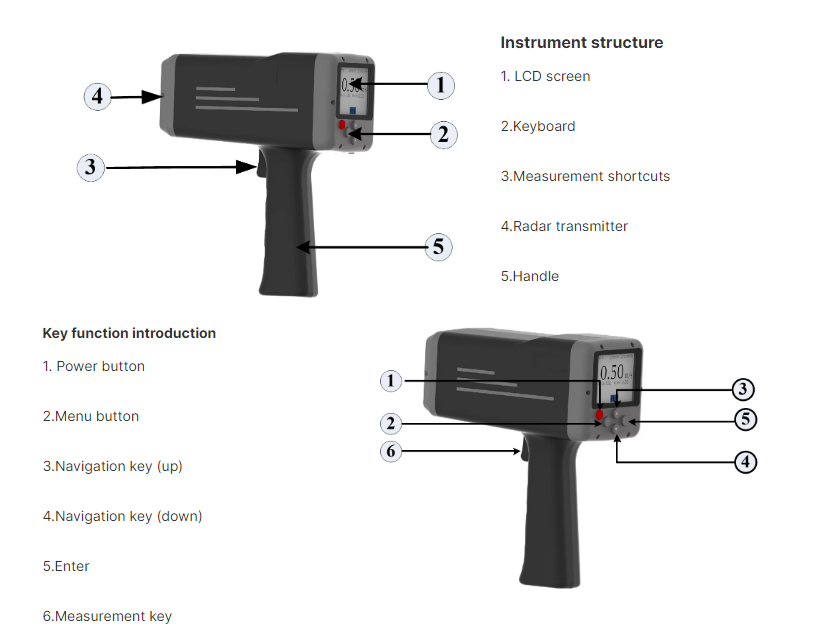Abstract
Hydrographic radar hand-held velocimeters are advanced instruments utilized for measuring the velocity of water flow in various environments. This paper explores the application of these devices in Southeast Asia, particularly within the context of the agricultural industry. Given the region’s unique challenges related to water management, such as flooding, irrigation, and sediment transport, the use of hydrographic radar technology offers profound benefits. We analyze how these devices enhance agricultural productivity, inform sustainable practices, and contribute to food security in Southeast Asia.
1. Introduction
Southeast Asia is characterized by its diverse agricultural landscape, which plays a crucial role in the economies and livelihoods of millions of people. However, agricultural practices face significant challenges due to the region’s variable climate, seasonal floods, and water scarcity. Effective water management is essential to improve agricultural productivity and ensure sustainability. The introduction of hydrographic radar hand-held velocimeters provides a pivotal solution to monitor water flow accurately.
This paper examines the specific applications of these velocimeters in agricultural settings, their potential impact on water management, and their significance in the broader context of food production and environmental stewardship.
2. Overview of Hydrographic Radar Hand-Held Velocimeters
2.1 Principle of Operation
Hydrographic radar hand-held velocimeters operate using Doppler radar technology, which measures the frequency shift of radar signals reflected from particles in moving water. This enables the measurement of water velocity, flow patterns, and sediment transport without the need for intrusion into the water body.
2.2 Features and Benefits
- Portability: These devices are compact and easy to operate, making them accessible for field use.
- Real-time Data: Hand-held velocimeters provide immediate feedback, allowing for timely decision-making in water management.
- Non-invasive Measurement: The technology does not disturb the water body, ensuring ecological integrity.
- Versatile Application: They are applicable in rivers, irrigation canals, ponds, and reservoirs, offering broad utility across different agricultural practices.
3. Applications in Southeast Asia
3.1 Flood Management
In regions prone to flooding, such as parts of Indonesia and Thailand, hydrographic radar velocimeters are essential in monitoring water levels and flow velocities. Accurate measurements enable farmers and local authorities to:
- Anticipate flood events and implement timely evacuations or protective measures.
- Design effective drainage systems to mitigate flood damage to crops.
- Optimize land use by identifying areas at risk of flooding.
3.2 Irrigation Management
Efficient irrigation practices are vital for maximizing crop yields in Southeast Asia’s varied climatic conditions. The use of velocimeters allows farmers to:
- Monitor the flow of water in irrigation canals and adjust systems accordingly to prevent both over-irrigation and water wastage.
- Analyze the impact of rainfall on irrigation needs, enabling better resource allocation.
- Maintain optimal soil moisture levels, crucial for crop health.
3.3 Sediment Control and Water Quality
Understanding sediment transport is critical for maintain water quality, especially in rice paddies and other crop areas. Hydrographic radar velocimeters assist in:
- Identifying sediment loads that can affect water quality, crucial for aquatic health and crop irrigation.
- Designing sediment control measures to enhance water retention and quality.
4. Impact on Agricultural Productivity and Sustainability
4.1 Enhancing Agricultural Yields
By providing precise measurements of water flow and irrigation needs, hydrographic radar velocimeters contribute to improved crop yields. Farmers can apply water more efficiently, ensuring that crops receive the optimal amount of moisture. Historical data collected over time can also support predictive modeling, enhancing strategic decision-making in planting and harvesting cycles.
4.2 Promoting Sustainable Practices
The integration of advanced technology such as hydrographic radar velocimeters promotes sustainable agricultural practices in several ways:
- Water Conservation: Accurate flow measurements help in the conservation of water resources, reducing waste and enhancing water use efficiency.
- Erosion Prevention: By understanding sediment dynamics, farmers can implement practices that minimize soil erosion, preserving arable land and enhancing long-term productivity.
- Environmental Monitoring: The data collected can support environmental assessments, ensuring that farming practices do not adversely impact local ecosystems.
5. Case Studies
5.1 Vietnam’s Mekong Delta
In the Mekong Delta, the application of hydrographic radar velocimeters has played a crucial role in managing water flows during the rice-growing season. The ability to measure water velocity and levels has improved irrigation planning, leading to higher yields and better resilience against flooding.
5.2 Thailand’s Agricultural Sector
In Thailand, farmers have utilized handheld velocimeters to streamline irrigation systems in the face of variability in rainfall patterns. The real-time data obtained through these devices allows farmers to customize their irrigation practices, thus maximizing crop production while preserving water resources.
6. Conclusion
The application of hydrographic radar hand-held velocimeters represents a significant advancement in agricultural technology in Southeast Asia. By enhancing water management practices, these devices contribute not only to increased agricultural productivity but also to sustainable water use and environmental protection.
As the region continues to face challenges related to climate change and population growth, integrating advanced technologies into agricultural practices will be vital for ensuring food security and safeguarding livelihoods. The continued promotion and adoption of hydrographic radar velocimeters can lead to a more resilient agricultural sector, ultimately benefiting the economy and the people of Southeast Asia.
References
[Note: In a formal paper, a comprehensive list of academic references, articles, reports, and additional resources supporting the research would be included here.]
For more Water radar sensor information,
please contact Honde Technology Co., LTD.
Email: info@hondetech.com
Company website: www.hondetechco.com
Post time: Feb-20-2025


